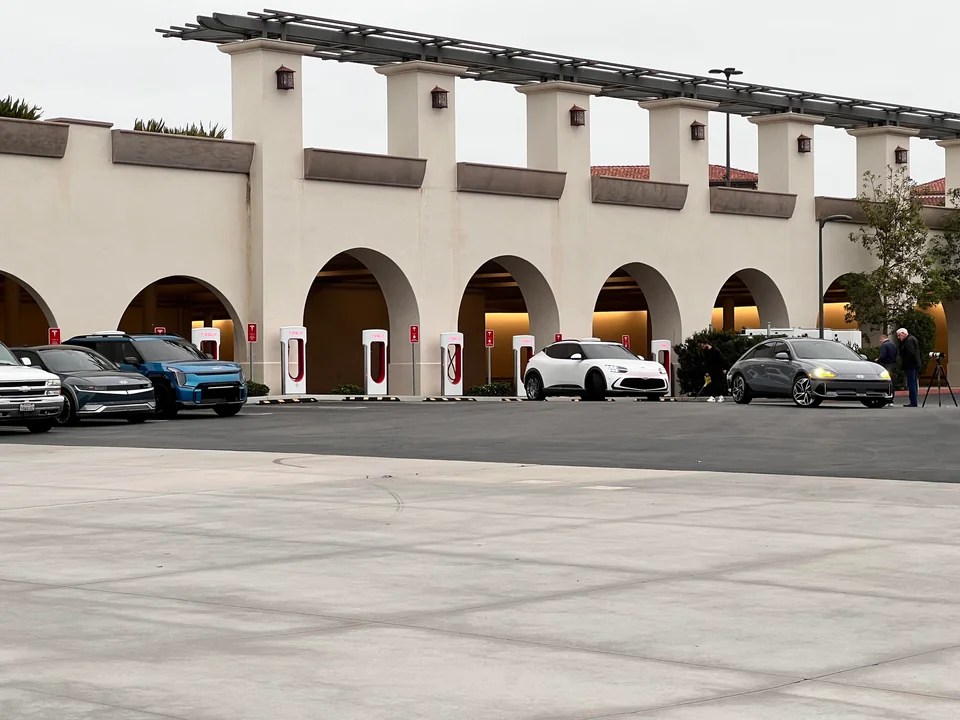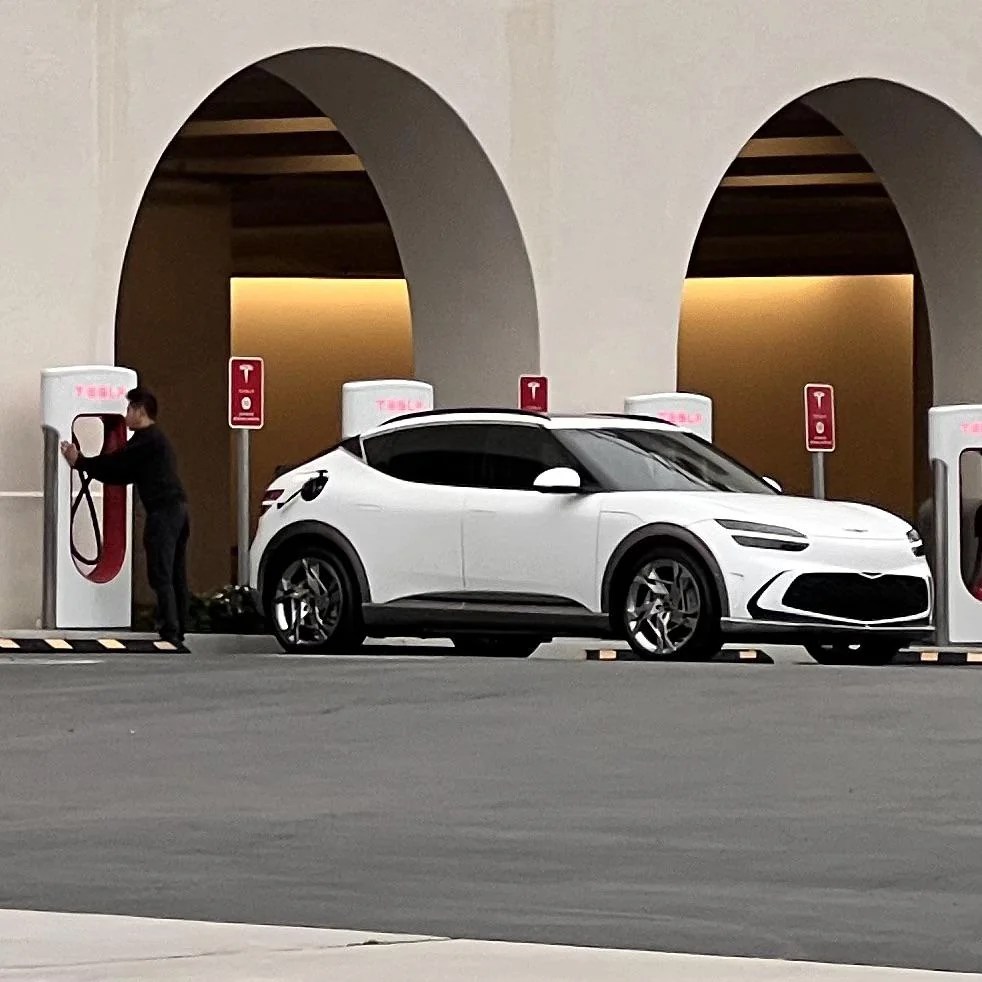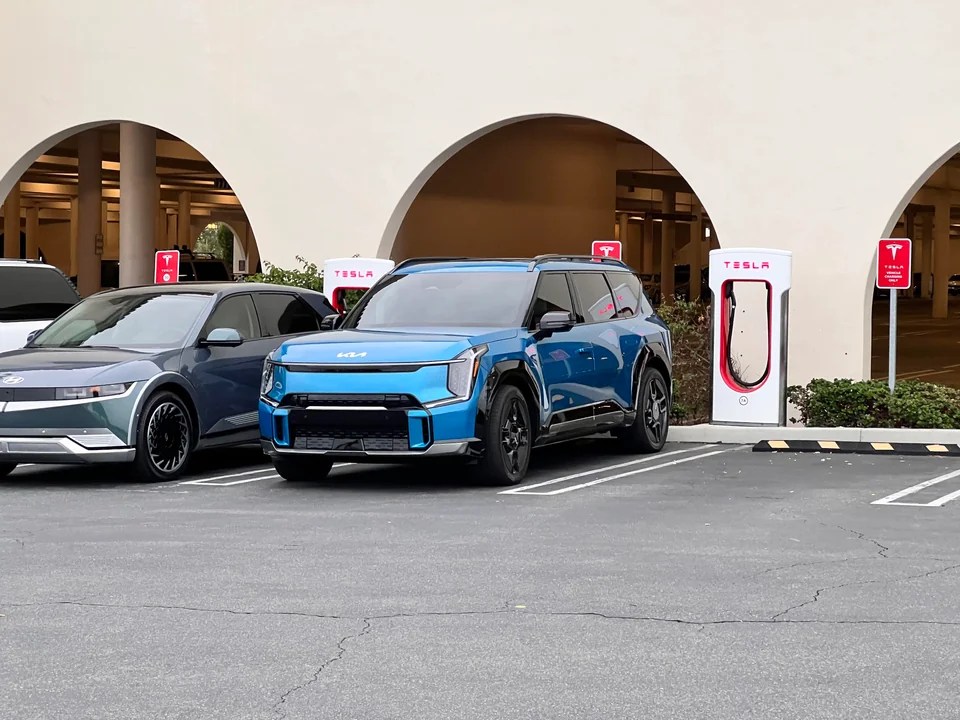
Hyundai, Kia and Genesis vehicles were spotted doing a photoshoot while “charging” at a Supercharger today, leading to speculation about whether the brands may be ready to announce a joint move to Tesla’s NACS charging connector.
NACS has been taking over the charging world ever since Ford’s announcement that it would adopt the connector back in May. Soon after, GM made the same announcement, and since then many other manufacturers have joined in.
However, heretofore, the Korean automakers have not made a similar announcement. Hyundai and Kia have a complicated relationship, with Hyundai owning about a third of Kia and Kia owning a big chunk of key Hyundai suppliers. And so they end up selling many similar vehicles – notably their EVs, which exist on shared platforms (the Ioniq 5/EV6 and Ioniq 7/EV9 are both on the shared E-GMP platform).
This platform is known for its fast-charging prowess, and between efficiency, quick charging speed and a broad charge curve, the platform might be the fastest-charging on the road right now, depending on how you measure it.
But the problem is that it uses SAE CCS charging, which is simply not as good as Tesla’s network. Not necessarily because of the equipment, but because Tesla’s Supercharger locations are just better overall.
So, if cars on Hyundai/Kia’s excellent E-GMP platform were connected to an easy-to-use, ubiquitous, and fast charging network…
Surely the companies have thought of the same thing, and today we have a pretty clear indication that they have, and that an announcement may be imminent.
Unreleased Hyundai/Kia vehicles spotted taking photos at a Tesla supercharger
A post appeared on reddit today showing a Hyundai Ioniq 5 and Ioniq 6, Genesis GV60 (Genesis is a division of Hyundai), and Kia EV9 “charging” at a Tesla Supercharger, with photos being taken while they do.
The shoot happened at the San Clemente supercharger, which is a pretty low traffic charger by Southern California standards. The cars were occupying the older v2 superchargers, likely both so they wouldn’t have to compete with charging vehicles and for the aesthetic background:



Notably, the EV9 is still unreleased (it’s expected to hit the road this quarter, and we just learned its $54,900 starting price this week), so while we can’t see whether it has manufacturer license plates, this car must be owned by the company. So we know that Kia was involved in this photoshoot.
u/Baayta, who posted the photos to reddit, said that the cars had a “thingy” in the charging port to “fake” charging for the photoshoot. The poster also stated that the photographers did confirm they work for Hyundai, and Hyundai’s US headquarters is relatively nearby in Fountain Valley, CA.
Top comment by John Arnold
The Hyundai EGMP platform only can accept a quality 800 volt charge from some EA chargers as things sit. To commit to the NACS connector, the Hyundai EGMP platform must be able to accept a quality 800 volt charge from at least one configuration of Tesla Supercharger. Whether Hyundai fixes the problem internally, which is hard to do without access to the design team at Tesla, or both companies need to give a little to support an optimum solution, Hyundai cannot commit to the NACS connector without a known path forward to a quality charge experience on the Tesla Superchargers.
So, why could these cars be taking photos at a Tesla supercharger? Especially if they are currently not capable of charging there?
It seems likely that an announcement is coming soon from the companies, quite possibly/probably a joint announcement of a shift to NACS.
We don’t know yet what form this would come in – some other manufacturers have said they will start by offering an adapter in the coming year or so, and then putting the connector on the vehicle in the 2025 model year.
We reached out to Hyundai and Kia for comment, and Hyundai responded saying that “we are always evaluating available technology solutions that could improve the customer experience, but don’t have anything to announce at this time.”
FTC: We use income earning auto affiliate links. More.





Comments